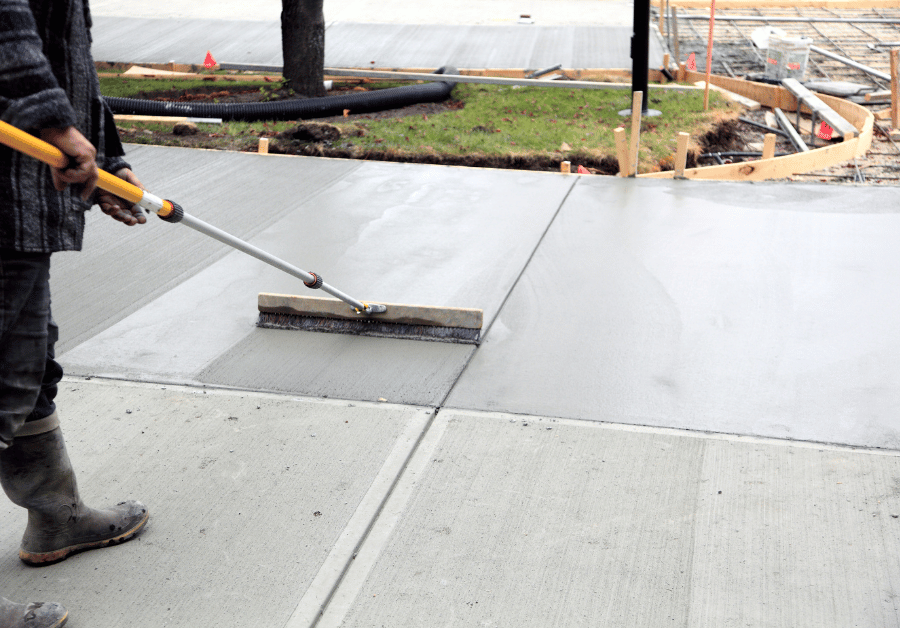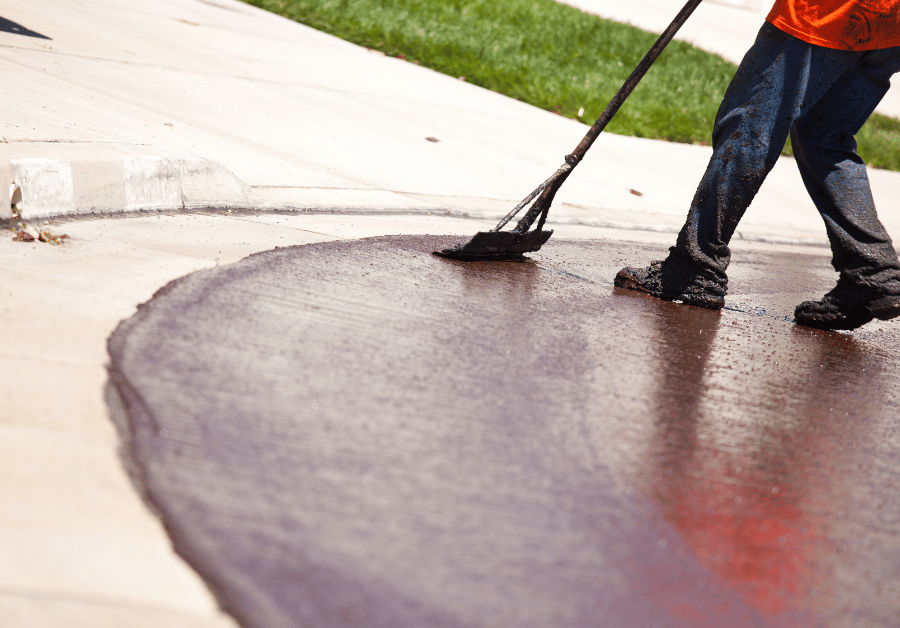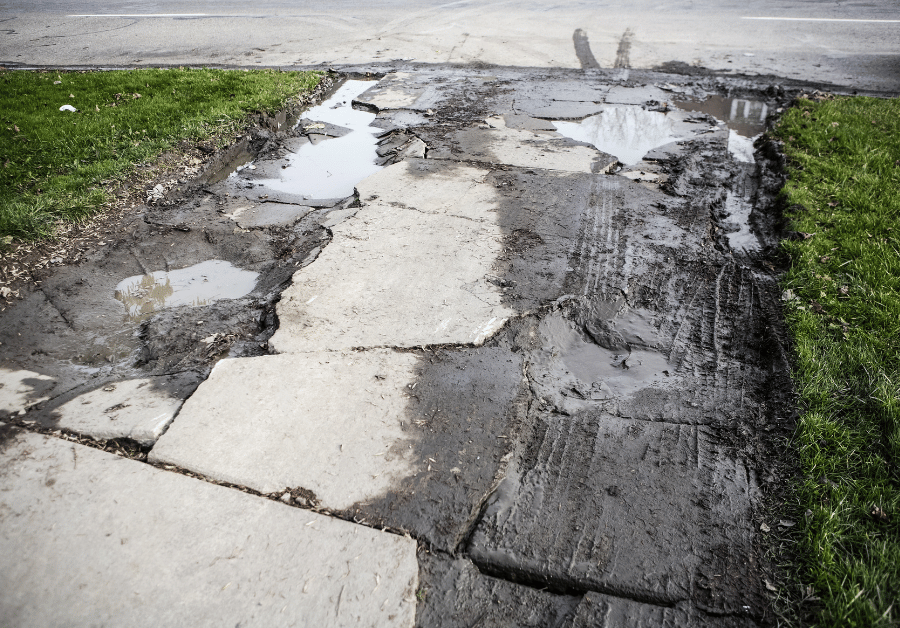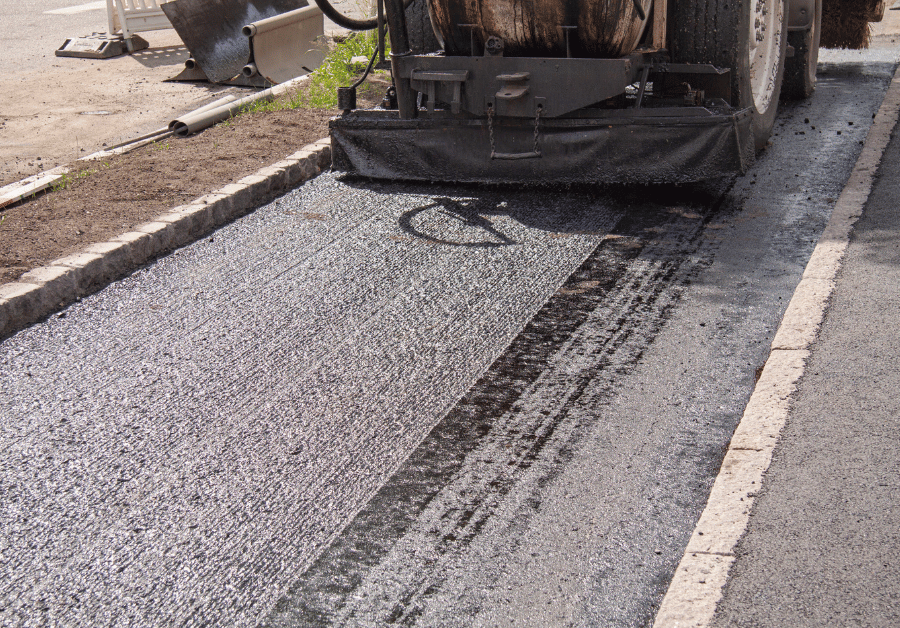Concrete Driveway Resurfacing: Your Ultimate Guide in Australia
Is your once-pristine concrete driveway showing its age? Are unsightly cracks, stubborn stains, or a faded appearance detracting from your home's curb appeal? You're not alone. Across Australia, from the bustling streets of Sydney and Melbourne to the sun-drenched suburbs of Perth and Brisbane, and the charming landscapes of Adelaide and Hobart, many homeowners face the challenge of a deteriorating driveway. But before you consider the costly and disruptive process of a full replacement, there's a brilliant, cost-effective solution: concrete driveway resurfacing.
This comprehensive guide will walk you through everything you need to know about revitalising your concrete driveway. We'll delve into the benefits, the process, the types of finishes available, and how to find the right professionals to get the job done right. Our goal is to provide more value, detail, and a better user experience than any other resource out there, helping you make an informed decision for your concrete surfaces.
What Exactly is Concrete Driveway Resurfacing?

At its core, concrete driveway resurfacing involves applying a new, thin layer of specialised polymer-modified cementitious overlay directly over your existing concrete surface. This isn't just a paint job; it's a durable, hard-wearing coating designed to bond seamlessly with the original concrete, creating a fresh, new look and enhanced protection.
Think of it as a facelift for your driveway. Instead of tearing out and re-pouring, which is disruptive and expensive, resurfacing offers a practical alternative. It's an ideal solution for driveways that are structurally sound but suffer from cosmetic issues such as:
- Minor cracks and hairline fractures (larger crack repair is done beforehand)
- Discolouration or fading
- Surface spalling or pitting
- Oil stains and other blemishes that won't come out with pressure cleaning
- A desire for a new aesthetic, like an exposed aggregate look or a decorative pattern.
The materials used for concrete resurfacing are engineered for superior adhesion, flexibility, and resistance to UV rays, moisture, and general wear and tear, making them perfect for the harsh Australian climate.
Why Choose Concrete Driveway Resurfacing? The Benefits for Australian Homes
Opting for concrete driveway resurfacing offers a wealth of advantages over a full replacement, making it a popular choice for Adelaide homes and businesses, and indeed, across the entire country. Here’s why it’s often the best concrete solution:
1. Significant Cost Savings
This is often the primary driver. Resurfacing is typically 50-70% cheaper than a complete concrete driveway replacement. You save on demolition, disposal, and the extensive labour associated with a full pour.
2. Enhanced Aesthetic Appeal
A faded, cracked driveway can drastically reduce your home's curb appeal. Resurfacing allows you to completely transform the look of your driveway, offering a vast array of colours, textures, and patterns. You can achieve the sophisticated exposed aggregate concrete finish, a clean modern look, or even mimic pavers without the maintenance of a paved driveway.
3. Superior Durability and Longevity
Modern resurfacing products are incredibly robust. They create a new surface that is highly resistant to abrasion, chemicals, UV damage, and moisture. When properly applied and maintained with concrete sealing, a resurfaced driveway can easily last for decades, providing excellent value for your investment.
4. Quick Installation and Minimal Disruption
Unlike a full replacement that can take days or even weeks of heavy machinery and disruption, concrete driveway resurfacing is generally a quicker process. Most residential driveways can be completed within 1-3 days, depending on size and preparation, meaning less inconvenience for your household.
5. Eco-Friendly Choice
By reusing your existing concrete slab, you reduce landfill waste and the need for new concrete production, making it a more environmentally conscious decision.
6. Improved Safety
Resurfacing can create a non-slip surface, which is particularly beneficial in wet conditions, enhancing safety for your family and visitors. It also eliminates trip hazards from cracks and uneven surfaces.
When is Resurfacing the Right Choice for Your Driveway?

While concrete driveway resurfacing is a fantastic solution, it's not always appropriate. It’s crucial to assess the underlying condition of your existing concrete driveway. Resurfacing is ideal if your driveway has:
- Surface-Level Damage: Fading, minor discolouration, small pits, or hairline cracks.
- Sound Structural Integrity: The existing concrete slab must be stable, with no significant structural cracks, severe heaving, or major subsidence. If your driveway has large, deep, or spider-web cracks indicating structural failure, a full replacement or extensive concrete repair might be necessary before any resurfacing can be considered.
- Good Drainage: Ensure water drains away effectively from the driveway. Resurfacing won't fix underlying drainage issues.
A professional assessment by concreting contractors or a 'driveway doctor' is highly recommended to determine suitability. They can advise on the extent of concrete repairs needed beforehand, such as crack repair and patching.
The Concrete Driveway Resurfacing Process: A Step-by-Step Guide
Understanding the process of concrete driveway resurfacing helps you appreciate the work involved and ensures you know what to expect from your chosen concrete services provider. While specific steps may vary slightly between products and contractors, the general outline remains consistent:
Step 1: Thorough Cleaning and Preparation
This is arguably the most critical step. The existing concrete surface must be meticulously cleaned and prepared to ensure optimal adhesion of the new overlay. This involves:
- Pressure Cleaning: High-powered pressure cleaning to remove all dirt, grime, oil, grease, and loose debris.
- Crack Repair and Patching: All existing cracks, spalling, and damaged areas are cleaned out and repaired using specialised patching compounds. This ensures a smooth, stable base for the overlay.
- Grinding/Etching: Depending on the surface, light grinding or acid etching may be performed to create a porous profile, enhancing the bond.
- Drying: The surface must be completely dry before application.
Step 2: Priming (If Required)
Some resurfacing systems require a primer to be applied to the prepared concrete. This enhances adhesion and ensures a consistent application of the topcoat.
Step 3: Overlay Application
The chosen resurfacing material (often a polymer-modified cementitious blend or stone resin) is mixed according to manufacturer specifications. It is then applied evenly over the prepared concrete surface using squeegees, trowels, or spray equipment. Multiple layers may be applied depending on the desired thickness and finish.
Step 4: Texturing and Design (Optional)
If a decorative finish like a stencil pattern, stamped concrete effect, or exposed aggregate look is desired, this is done while the overlay is still wet. This is where creative textured coatings come into play.
Step 5: Curing
The resurfaced driveway needs time to cure and harden. This can range from 24-72 hours for light foot traffic and several days for vehicle traffic, depending on the product and weather conditions. Proper curing is vital for the longevity and durability of the new surface.
Step 6: Sealing
Once cured, a high-quality concrete sealing agent is applied. This clear topcoat provides an extra layer of protection against stains, UV damage, water penetration, and general wear, significantly extending the life and maintaining the look of your resurfaced driveway.
Types of Concrete Resurfacing Finishes: Unleash Your Creativity

One of the most exciting aspects of concrete driveway resurfacing is the vast array of aesthetic options available. You're not limited to just grey! Modern concrete resurfacing products allow for incredible customisation, helping you achieve the perfect look for your home. Here are some popular finishes:
1. Spray-On Paving / Stencilled Concrete
This popular option involves spraying a coloured, textured overlay onto the concrete through stencils to create patterns that mimic bricks, pavers, tiles, or even decorative motifs. It's highly versatile and offers excellent slip resistance.
2. Stamped Concrete Overlay
For a more textured and dimensional look, a thicker overlay can be stamped with mats designed to replicate natural stone, timber, or intricate patterns. This creates a realistic and high-end finish without the cost of real materials.
3. Epoxy Coatings
Epoxy coatings offer a seamless, high-gloss finish that is incredibly durable, chemical-resistant, and easy to clean. While more common for garage floors, clear or coloured epoxy can be used for a modern, sleek driveway appearance, sometimes incorporating decorative flakes.
4. Exposed Aggregate Look
Achieve the popular exposed aggregate concrete aesthetic without the full cost of a new pour. A resurfacing overlay can be embedded with small stones or aggregates, then washed or ground to expose the decorative stones, offering a natural and sophisticated aggregate concrete finish. This is a highly sought-after look for Adelaide homes and across Australia.
5. Coloured and Textured Coatings
Beyond patterns, you can simply choose a solid colour or a subtly textured finish to refresh your driveway. From earthy tones to contemporary greys, the colour options are extensive, allowing you to perfectly match your home's exterior. Creative textured coatings can add depth and character.
6. Stone Resin & Stone Resurfacer
Some advanced systems use stone resin or stone resurfacer products, which are blends of natural stone aggregates and durable resins. These create a highly permeable, attractive, and hard-wearing surface that can look like natural stone. While some DIY kits exist for smaller areas, professional application is key for driveways.
Cost of Concrete Driveway Resurfacing in Australia
The cost of concrete driveway resurfacing varies widely based on several factors, but it remains significantly more affordable than a full replacement. Here's what influences the price:
- Driveway Size: Larger driveways naturally cost more due to increased material and labour.
- Current Condition: Extensive concrete repair or driveway repair (like significant crack repair, levelling, or removing old coatings) will add to the overall cost.
- Type of Finish: Basic coloured overlays are generally less expensive than intricate patterns, stamped concrete, or high-end exposed aggregate finishes.
- Material Quality: High-performance polymer-modified overlays and advanced stone resurfacer products may have a higher material cost but offer superior durability.
- Location: Prices can vary slightly between major cities like Sydney, Melbourne, Perth, Brisbane, Adelaide, and Hobart due to local labour costs and material supply chains.
- Contractor Experience: Highly experienced concreting contractors may charge more, but their expertise often translates to a superior, longer-lasting result.
As a rough guide, you might expect to pay anywhere from $50 to $150 per square meter for concrete resurfacing, whereas a new concrete pour could easily be $80 to $200+ per square meter. The best way to get an accurate estimate for your specific project is to obtain a free quote from several reputable concrete services providers. This allows you to compare costs and ensure you're getting competitive pricing.
Choosing the Right Professional for Your Concrete Driveway Resurfacing
The success and longevity of your concrete driveway resurfacing project depend heavily on the expertise of the professionals you choose. Don't simply go for the cheapest free quote. Look for a company with a proven track record, demonstrated expertise, and a commitment to quality customer service.
Here are key factors to consider when selecting concreting contractors:
- Experience and Specialisation: Look for companies that specifically specialise in concrete resurfacing and concrete repairs, not just general concreting. Ask about their years of experience and view their portfolio of previous work, especially for Adelaide homes and businesses or similar projects in your area.
- References and Reviews: Check online reviews (Google, local directories) and ask for references from past clients. A friendly team with positive feedback is a good sign.
- Licensing and Insurance: Ensure the contractor is properly licensed and insured. This protects you in case of accidents or issues during the project.
- Detailed Quotes: A reputable contractor will provide a comprehensive, itemised free quote that clearly outlines all costs, materials, and the scope of services.
- Warranty: Ask about warranties on both materials and workmanship. This demonstrates confidence in their best concrete work.
- Local Knowledge: For Adelaide residents or those in other specific cities, choosing a local company (e.g., Adelaide Paving and Concrete, or companies serving Adelaide wide) can be beneficial as they understand local conditions and regulations.
Finding the right professionals can be time-consuming. That's where platforms like Get 3 Quote come in handy. We connect you with verified, trusted local service providers, making it easy to compare quotes and choose the best match for your concrete driveway resurfacing project.
Concrete Driveway Resurfacing Across Australia: Local Insights
While the principles of concrete driveway resurfacing remain the same, local conditions can influence choices and considerations across Australia's major cities:
Sydney & Melbourne: Urban Aesthetics & Durability
In high-density urban areas, curb appeal is paramount. Homeowners in Sydney and Melbourne often opt for sophisticated exposed aggregate concrete or modern grey finishes that complement contemporary architecture. Durability is key due to heavy traffic and diverse weather conditions.
Brisbane & Perth: Heat, UV, and Outdoor Living
The warmer climates of Brisbane and Perth demand resurfacing materials that are highly resistant to intense UV radiation and heat. Lighter colours can help reflect heat. Non-slip surfaces are also crucial for safety, especially around pool surrounds and outdoor entertaining areas that often connect to driveways.
Adelaide: Heritage Charm & Modern Updates
For Adelaide residents, resurfacing Adelaide driveways often involves blending modern solutions with the city's unique architectural styles. Many homeowners seek finishes that complement heritage homes while enjoying the benefits of contemporary concrete surfaces. Companies like Paving SA or those offering Adelaide paving and concrete Adelaide services are well-versed in these local nuances. The 'driveway doctor' approach is popular for fixing existing issues before a fresh look.
Hobart: Cold Climates & Moisture Resistance
Hobart's cooler, wetter climate means that resurfacing materials must offer excellent resistance to moisture penetration and freeze-thaw cycles. Concrete sealing becomes even more critical here to protect against water damage and moss growth.
Maintaining Your Resurfaced Driveway: Simple Steps for Longevity
Once your concrete driveway resurfacing is complete, a little ongoing care will ensure it looks great and lasts for many years. The maintenance for a resurfaced driveway is generally quite simple:
- Regular Cleaning: Sweep or hose down your driveway regularly to remove dirt, leaves, and debris. For tougher stains, use a mild detergent and a brush.
- Pressure Cleaning: Periodically, a thorough pressure cleaning can restore its fresh look. Be careful not to use excessively high pressure or hold the nozzle too close, which could damage the surface.
- Prompt Spill Cleanup: Clean up oil, grease, or chemical spills immediately to prevent staining.
- Re-sealing: While the initial concrete sealing provides excellent protection, it's advisable to re-seal your driveway every 2-5 years, depending on traffic, climate, and the type of sealant used. This replenishes the protective barrier and enhances the surface's resistance to wear and tear.
- Address Minor Repairs: If small chips or cracks appear over time, address them promptly with appropriate concrete repair products to prevent them from worsening.
- Question 1: What is concrete driveway resurfacing and how does it work?Question 2: Is driveway resurfacing better than replacing the concrete?Question 3: What are the most popular resurfacing finishes in Australia?Question 4: How do I maintain my resurfaced driveway to make it last longer?
Ready to Transform Your Driveway?
Your driveway is more than just a place to park your car; it's a significant part of your home's first impression and an essential functional area. If your concrete driveway is looking tired, worn, or simply doesn't match your home's style anymore, concrete driveway resurfacing offers an exceptional solution.
It's a smart investment that provides incredible value, enhancing aesthetics, durability, and safety, all while being significantly more cost-effective and less disruptive than a full replacement. Whether you're in Sydney, Melbourne, Perth, Brisbane, Adelaide, or Hobart, there are expert concreting contractors ready to help you achieve the driveway of your dreams.
Don't let a deteriorating driveway detract from your home's beauty any longer. Take the first step towards a stunning, revitalised entrance. Get started today and find the perfect professional for your concrete driveway resurfacing project. We make it easy to get up to three detailed quotes from verified local professionals, so you can compare, choose, and transform your home with confidence.
